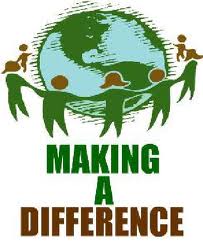 Teachers go into teaching to make a difference. Then reality hits. This time in history is hitting everybody. 60% of Americans feel the country is in decline. State education budgets are devastated. Teachers want to make their lessons engaging but there are so many reasons or excuses that they find to go back to what is safe and easy. Actually, I’m starting to understand their position.
Teachers go into teaching to make a difference. Then reality hits. This time in history is hitting everybody. 60% of Americans feel the country is in decline. State education budgets are devastated. Teachers want to make their lessons engaging but there are so many reasons or excuses that they find to go back to what is safe and easy. Actually, I’m starting to understand their position.
I’m a coach who comes into their classrooms and shares with them strategies to engage students and then I leave. I set up a way to virtually support them. What I see is a different teacher than when I worked with teachers 20 years ago. The world is different. Their training is different. The curriculum is different. The pressures they have today are overwhelming. Teachers are told to follow the pacing guide. Why are you not on page 262 on Thursday? This is impossible if you want to engage students in the learning process. Reading from a script is boring for the students and the teacher. It creates a power struggle between the teachers and the students. Teachers become more isolated in their classrooms instead of where we were going – a more collaborative network of professionals learning from each other. When you read from a script, you don’t need collaboration.
Changing the learning environment depends on the school, the administrator, and the willingness for the school community to take risks. Risk-taking and being okay with failing is the way we learn. There cannot be one right answer if we want to solve global issues.
What if we stop and rethink what school is all about. It’s all about the kids. Their future is at stake. It’s a moral issue. It needs to be about learning not teaching. Our children are not prepared for their future. Pacing guides, meeting the standards, teaching to the test, are just not enough anymore. So if you are a teacher who wants to make a difference in kid’s lives and are in a situation where you and your students talents and creativity may be stifled, there are several things you can do before you give in or give up.
- Start your digital footprint by following people who believe in the same things as you and follow them.
- Build your personal learning network (PLN) using social media i.e. Facebook, Twitter, LinkedIn, Classroom 2.0 on Ning, and more.
- Join My eCoach and voice your challenges and successes in the Conversation Corner. Look for projects or lessons in the eLibrary and clone and adapt any of them.
- Write a blog or comment on people’s posts so there are trackbacks to you. Quote and link to those people who write and talk the way you want to write and talk. I welcome your comments and invite you to follow me.
- Attend conferences virtually if you cannot go to the conferences in person. Some conferences include: K12 Online Conference, Connecting Online Conference (CO11), Global Education Conference, and Educon 2.3. If the conferences are over, then watch the archives.
- Check out collaborative global projects like iEARN, Global Schoolhouse, and ePals. Your students want to make a difference too and need a way to connect the curriculum to the real world.
- Find, clone, or create and implement one lesson that infuses some creativity as a replacement unit. You can use the Universal builder — it’s easy. Or use Google Sites or Wikispaces. Just take a risk to publish online.
- Capture moments using digital media of students working on a unit without creativity and comparing it with the replacement unit. If you don’t have a camera, ask your coach to capture it for you.
Start small. Change takes time. Learning is all about change. Learning never ends. It means that your students as learners want to grow and add skills or knowledge to what they know and do to reach their learning goals. You are their co-learner, guide, coach, mentor… facilitating the process. They may not have goals so you may be guiding them to learn how to question, be a critical thinker and problem solver. Your learning never ends either. That’s why you are reading this.
To be an agent of change (that’s what this type of teacher is), you cannot do it alone. Ask for help. Find a coach or mentor to work with you on the backend. A coach is there to guide you to success. It only takes starting with one project. It may not be an overwhelming success where you see gigantic breakthroughs, but take into account the tone in your classroom– where it is and where you want it to go. You still may need to do direct instruction. The forces and atmosphere are still traditional teaching and direct instruction but this is where you can make a difference.
One teacher at a time — One classroom at a time — One PLN at a time –All of us sharing why we need to change so we have evidence — real evidence that this works.
So what does success look like to you? How are you making a difference in a child’s life? How can we help you?
Follow me on…
- Twitter: @bbray27
- Facebook: barbara.bray
- LinkedIn: barbarabray



[…] This post was mentioned on Twitter by Nancy Caramanico, Barbara Bray. Barbara Bray said: Making a Difference http://goo.gl/fb/92BET […]